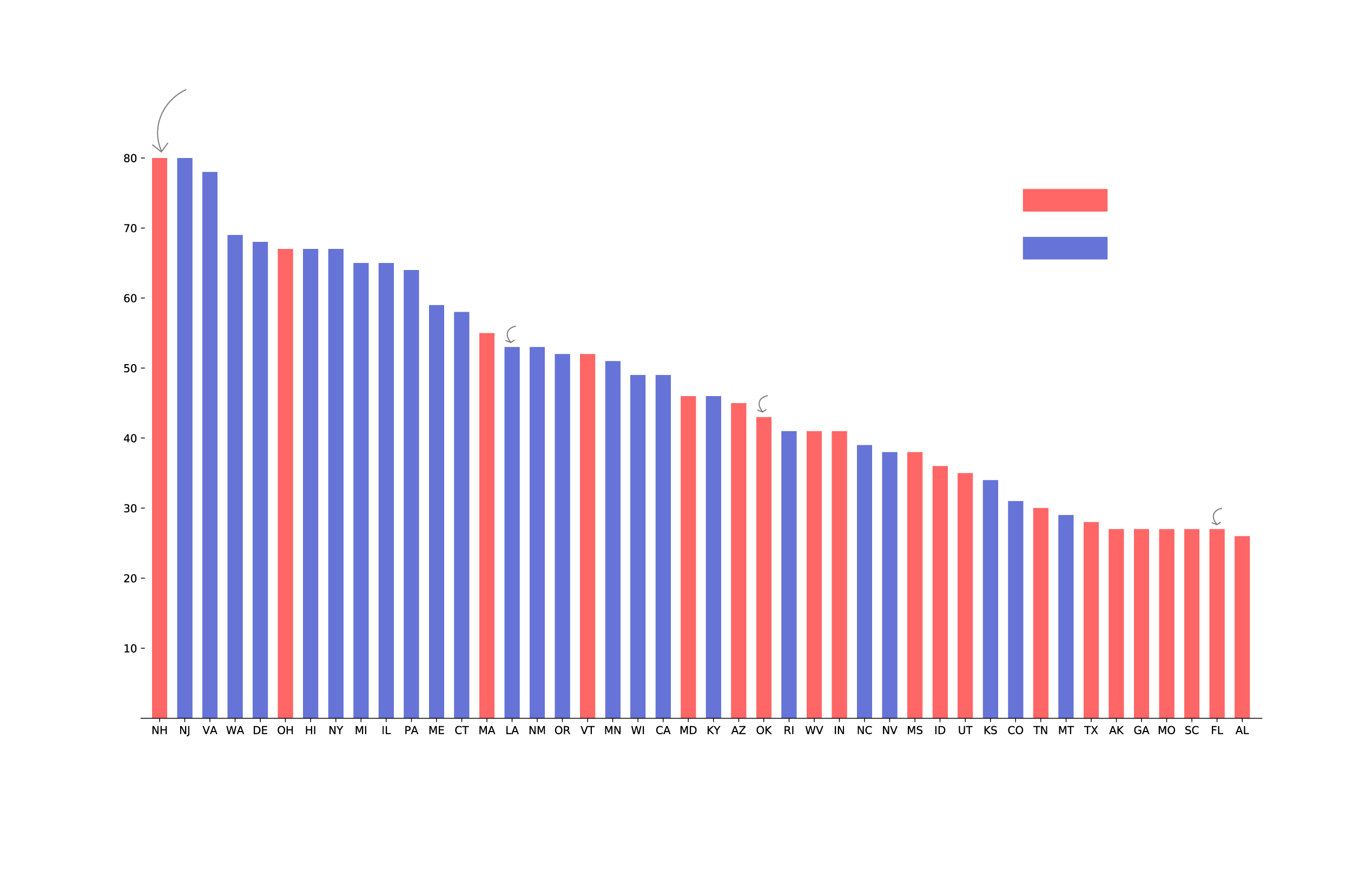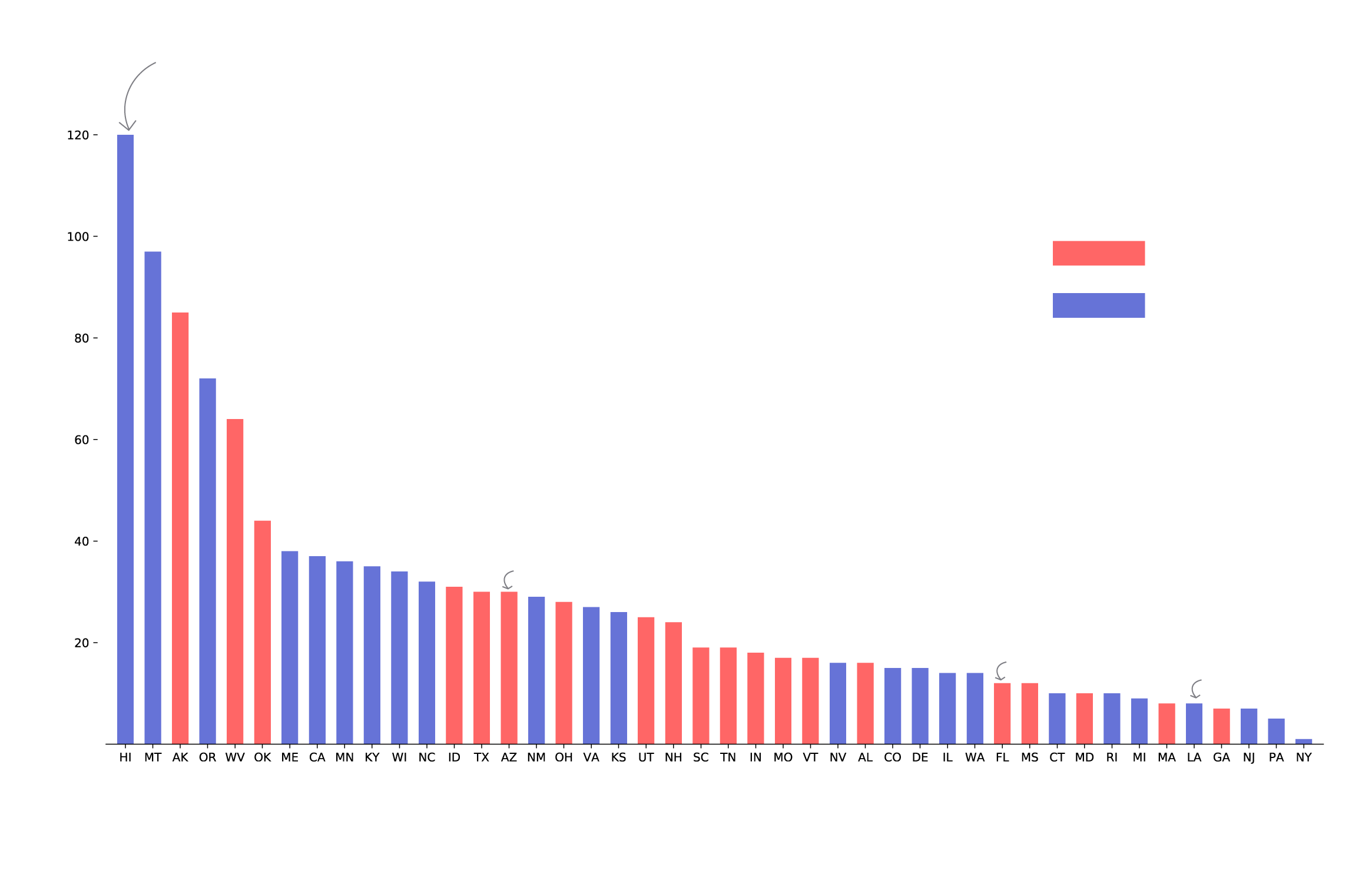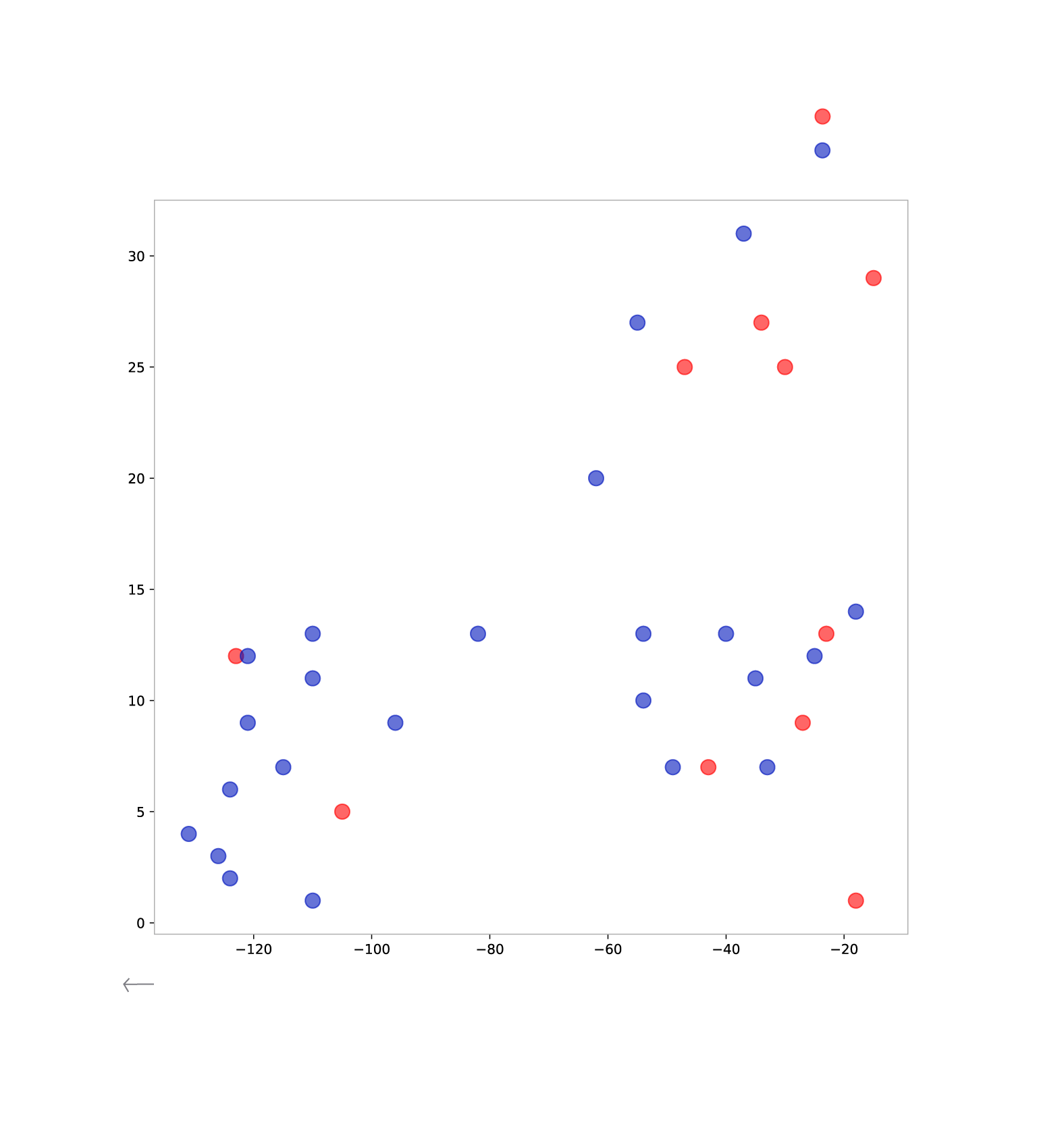
The state ordered
“stay at home” 80 days
before its first reopening
Politics make a clear difference when it comes to the length of “stay at home” orders
Republican governor
Democratic governor
3k/ 100k on Aug.18
2.7k/ 100k on Aug.18
2.6k/ 100k on Aug.18
0 day the state
ordered “stay at home”
before its reopening
Source: AppliedXL COVID Tracker; National Academy for State Policy.


